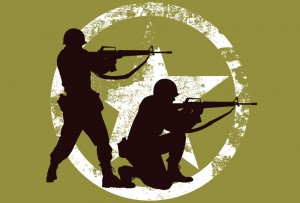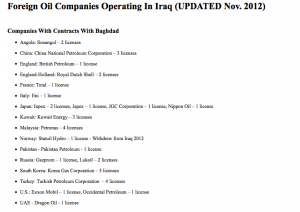2013-01-04 by Robbin Laird
The shift from the land wars in Iraq and Afghanistan will have a significant impact on the future of the US Army, its force structure, and approach.
This will not happen over night, but the operation of large forces to control territory, to operate over significant distances within that territory to operate against insurgents, to operate as the key force for training and providing security for first Iraq and then Afghanistan are not going to be replicated any where else any time soon.
Before one rushes in to do these missions, one will have to ask with whose checkbook and for how long?
And then the question of duration of operations and relationship between cost of stays versus outcomes is crucial as well. Iraq is the obvious test case. Given that the US government was not able to shape a status of forces agreement to remain engaged in Iraq, the benefit of rebuilding the country is not obvious.
“Joe 6 pack” would want to know at least did the US can some special access to the provision of oil from Iraq. And to that the answer is certainly a resounding no.
Fighting abroad to secure oil for China is probably not a core mission for the US Army.
http://musingsoniraq.blogspot.com/2011/11/foreign-oil-companies-operating-in-iraq.html
And given the evolution of Iraqi foreign policy – support for Assad comes to mind – it is difficult to know what the long-term political benefits are as well.
Any consideration of a “staying force” operating in Asia in any way along the lines of Iraq and Afghanistan is not on.
But there clearly are some key elements learned during those operations, which could be applicable going forward, and there are several key missions, which the US army is responsible for in the Pacific.

A key lesson learned by the younger generation of US Army officers, which seems at odds with some of the older leadership is how to adapt the Army to evolving conditions.
In a recent discussion with a very distinguished Army major with tours in both Iraq and Afghanistan, this officer was asked about the connection between his combat experience and the Army’s amazing thought process which would replace a Bradley fighting vehicle with a vehicle heavier than an MRAP! And in answering the question, the importance of re-setting Army thinking to work in the joint arena which the Pacific clearly is was discussed as well.
“It makes no sense at all. We need to be smaller and more lethal, not heavier. This makes no sense. At one point, we were considering a light tank for operations; this would make more sense. Our experience with air support show how important joint operations can be for the Army force on the ground. But to ensure all weather support, we need capabilities on the ground as well.”
Most interestingly when asked what key difference he saw between his generation and the older one of officers, he took little time in answering.
“For the older generation, the deep cultural divisions of the various Army branches are an essential reality. In part, this has been built on expecting land wars of a more traditional or classical sort.
For my generation, our experience is that the enemy is dispersed and diffuse. We work together to deal with this reality, and look to work as a team with the various assets available. When you are a distributed force, you need to be more integrated and grab whatever asset is available. Rather than assembling a highly structure and complexly organized force, our experience is forging capability to deal with a dispersed and diffuse enemy. If we leverage this difference, the Army could look very differently than it has been historically.”


